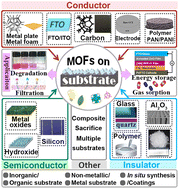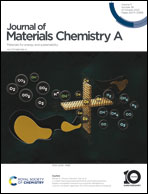Metal–organic frameworks on versatile substrates
Abstract
The potential commercial uses of metal–organic frameworks (MOFs) are intriguing. One of the existing challenges is that many sophisticated nanotechnology applications require the deposition of the as-obtained MOF powder on solid substrates. It is generally accepted that combining pure MOFs with substrate materials to produce MOF-based composite membranes can mitigate the drawbacks of pure MOFs while preserving their original benefits. This review's objective is to offer a series of substrates that have been successfully used to fabricate MOF layers, such as conductors (metals, metal oxides, electrodes, carbon-based materials, and polymers), semiconductors (metal oxides, layered double hydroxides, and silicon), and insulators (metal oxides, quartz crystal microbalance, glass, fibers, and polymer substrates). At the same time, we also analyze these substrates from other perspectives, such as organic and/or inorganic substrates, metal and/or non-metallic substrates, single substrates and/or composite substrates, etc. Several synthesis techniques and unique ways have been discussed for the construction of MOF films on porous substrates. Subsequently, we concentrate on the applications for MOF/substrates, including gas storage and sorption, conductivity, non-linear optics, luminescence, sensors, and catalysis. Finally, the restrictions and deficiencies of MOF/substrate composites are discussed, along with the challenges that should be overcome when producing MOF-based devices.

- This article is part of the themed collection: Journal of Materials Chemistry A Recent Review Articles


 Please wait while we load your content...
Please wait while we load your content...